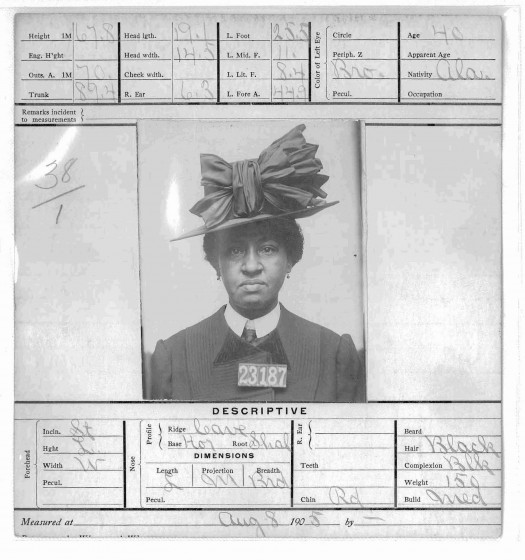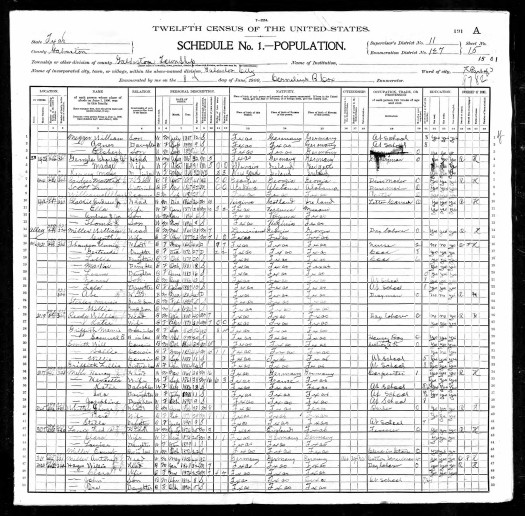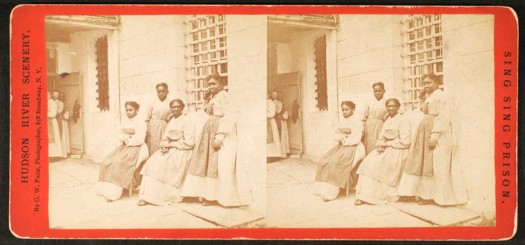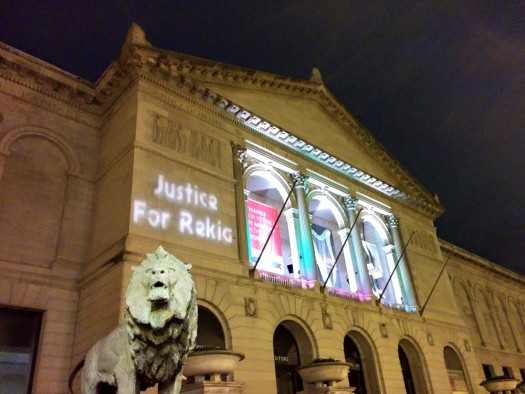I’m writing this for myself and not as social commentary. I am writing to make sense and meaning. I am publishing these words not to invite comment but because perhaps others are struggling to make sense and meaning too.
I’ll admit that I am currently battling demoralization. I arrived to a pre-trial rally/gathering for Rekia Boyd during a downpour today. The skies opened and the rain came down mirroring my mood. I arrived late because I was supporting a young person who is on trial in juvenile court this morning. I ducked out and drove to Criminal Court to support Rekia’s family for a few minutes.
It was a small group when I arrived. Martinez Sutton, Rekia’s brother who has been steadfast in fighting to bring his sister’s killer to court, had just finished speaking. People held signs and images of Rekia and other women killed by police.
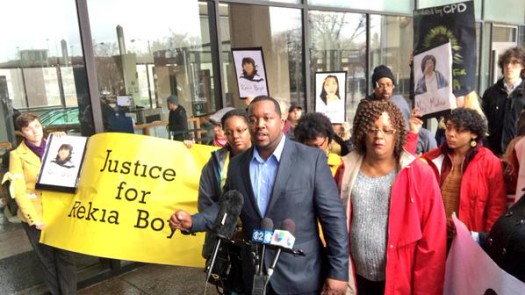
Rekia’s brother and mother
photo by @minkumedia (4/9/15)
I can’t lie. I was disappointed in the turnout. I know, I know that there are hundreds of reasons people didn’t show up in numbers. A friend mentioned that perhaps the rain had kept them away. I stared at him. We both knew the truth. For all of the talk of Black Lives mattering, all evidence points to the opposite. Rekia’s life surely mattered to her family and friends. It matters to the small but determined group that showed up in solidarity with her family today. Beyond that though, no, Rekia’s life doesn’t matter in this country.
There is in fact a hierarchy of oppression as Black women, Black trans and gender nonconforming people have even less access to limited sympathy than do cis heterosexual Black men. To deny this is to be a liar. When we call out ‘who will keep our sisters?’ too often we are greeted with one or two lone voices in the wilderness but usually with silence.
The prosecution opened its case against Dante Servin, the detective who killed Rekia Boyd, by saying: “She didn’t see it coming; she didn’t have a chance.” And so it is that too many Black people in this country don’t have a chance to live our lives free from terror.
There’s another videotaped execution of a Black man circulating. Some are calling it ‘shocking.’ It is not. According to reports, the video shows a 50 year old Black man fleeing from a white police officer who shoots him eight times. When the man is on the ground, the cops check his pulse presumably to make sure that he is dead. The dead man is then handcuffed. The dead man’s name is Walter Scott and I refuse to watch his killing. I don’t want to participate in the spectacle. That’s my choice and it won’t be everyone’s.
The deaths are like computer wallpaper and serve as background noise on social media. The deaths are fodder for the continued traumatization and oppression of Black people. The deaths are daily terrorism. Who is next? Will it be a loved one? Will it be me? I’m opting out of the endless ghastly ritual to preserve my soul. Enough. I can’t control the circulation of images of Black death across the world. I can only resolve not to add to the trauma by sharing images myself.
Another Black person is dead at the hands of the police. I don’t care if Mr. Scott was armed or unarmed. I don’t care if he was a family man or a deadbeat parent. I don’t care if he had a record or not. I am gutted that he was killed. That’s enough. Now comes the contest, the fight to define & decide whether this is a Black person who can be, should be mourned. Perhaps some columnists or pundits (white or Black) will write that we should direct our grief to a more ‘worthy’ or ‘true’ victim. Those words will cause a minor uproar on social media that will quickly fade.
Some of us won’t easily move on from the deaths. Each one feels like a lash to our souls. Those wounds are always tender. They stay with us. They linger in our consciousness and hearts. Because this is true, we won’t be swayed by the attempts to humanize the un-human. We won’t spend time talking about dehumanizing the un-human either. We understand that the (white) gaze is unimportant so we don’t seek it out. We let them do their own work with each other. We welcome those who want to uproot structural oppression while understanding that we have all we need to save ourselves. So we focus intently on our own survival and we ignore the chatter about allyship in favor of co-strugglers. We make the daily decision to love each other as Black people even more and to protect each other by any means necessary. We worry about what it does to Black people to live always with trauma, to exist so precariously, to be always at risk of corpsehood. We remember to grieve within our communities of choice. We remember to take the time to mourn, for real. We embrace both the struggle and the love.
When the police repeat that ‘they are in fear for their lives’ every time they shoot and/or kill a Black person, I think that we must take them at their word. Blackness poses an existential threat which must be destroyed. History attests to this reality. How else are we to understand the relentless, consistent, unending obliteration of Black people by the state over decades and centuries? Even after being shot 8 times, checked to make sure we aren’t breathing, the cops still chain our dead bodies with handcuffs. That behavior can only make sense if we understand blackness to be a perpetual threat to whiteness.
Some will read my words and clamor for a 10 point plan. That’s all well and good they’ll say, but how do we “fix” this? To you, I say, come up with your own “fixes.” I am in mourning today…
.
